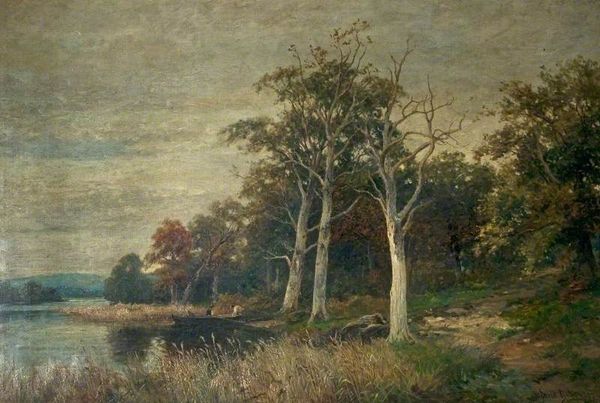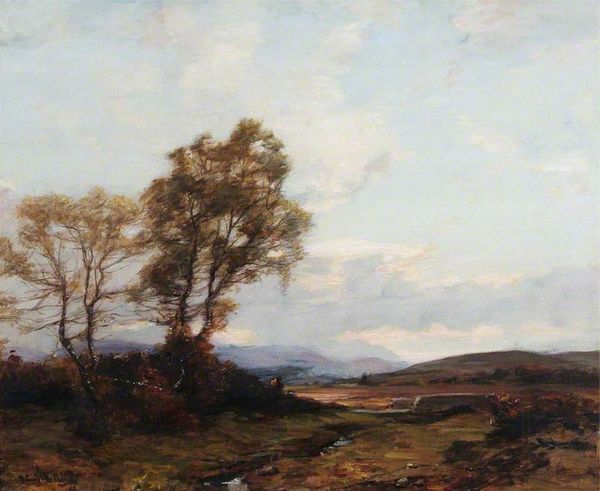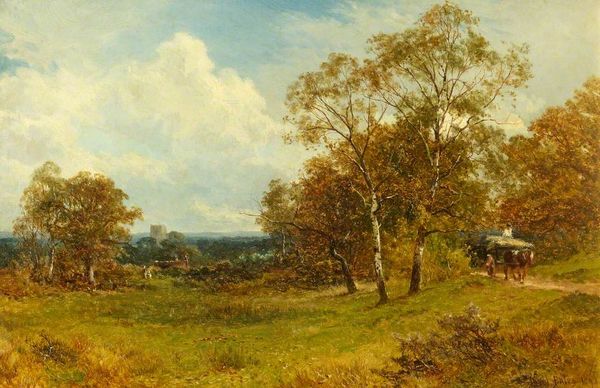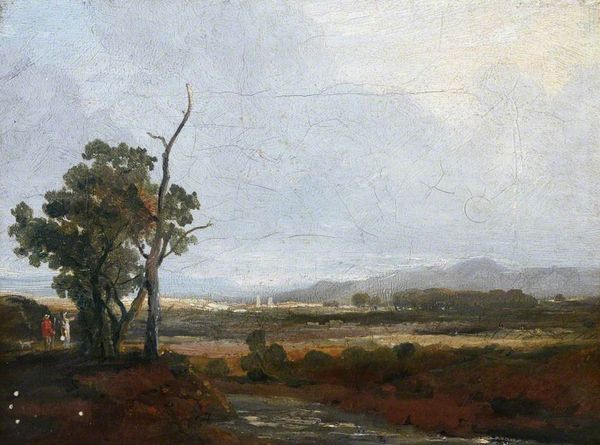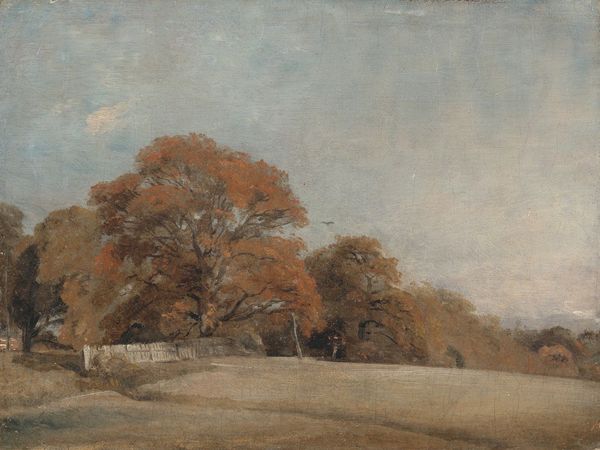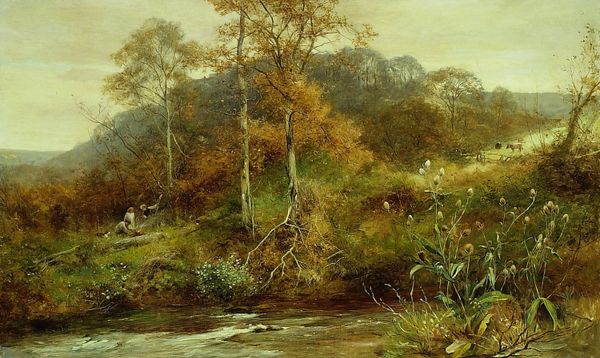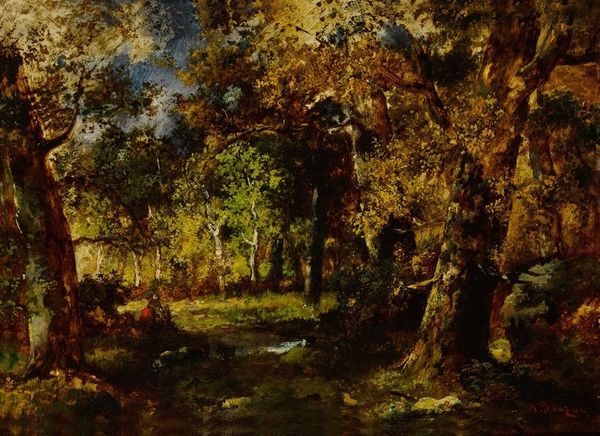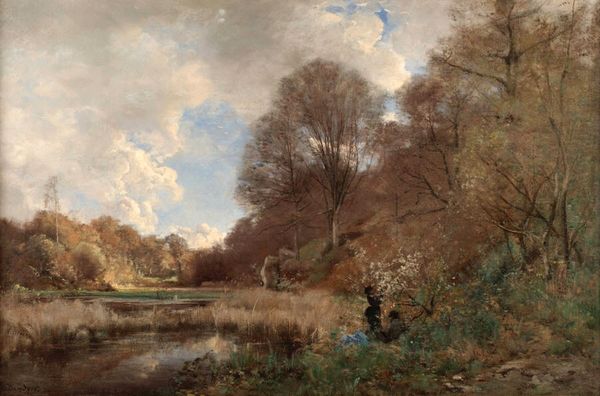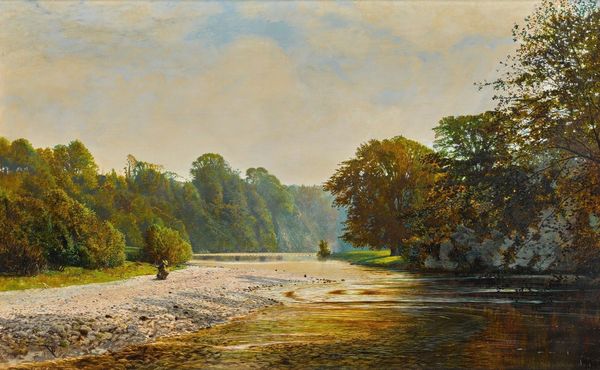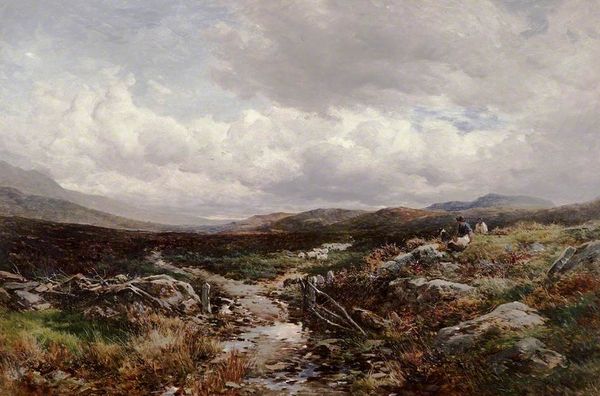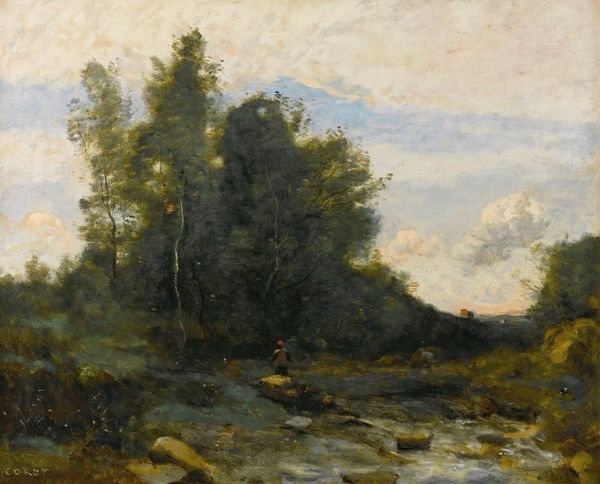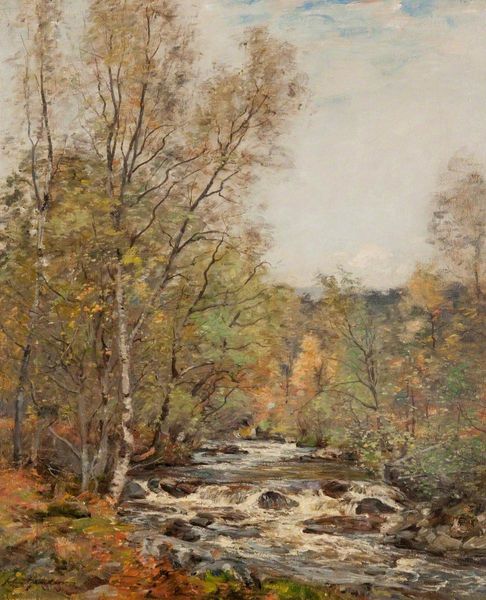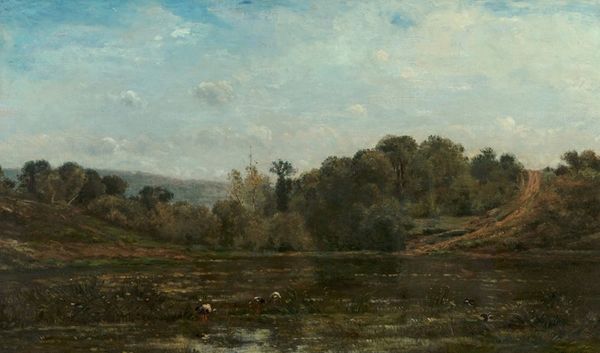
painting, plein-air, oil-paint
#
tree
#
painting
#
plein-air
#
oil-paint
#
landscape
#
oil painting
#
romanticism
#
cityscape
#
realism
Copyright: Public domain
Editor: Here we have John Henderson’s “The Blairie Burn, Glen Moriston”, created with oil paint. The texture seems so rich, almost tactile. The colours create a serene, but also somewhat melancholy, atmosphere. How do you read this landscape, thinking about its formal qualities? Curator: Let us examine the artist’s technique. Notice how Henderson uses impasto to build texture in the foreground, contrasting with the smoother, more blended treatment of the distant hills. What effect does this juxtaposition of textures create, in your opinion? Editor: It gives the foreground a sense of immediacy, while pushing the background away, deepening the sense of perspective. Curator: Precisely. The artist’s restricted palette—dominated by earth tones and muted greens—is also significant. The subdued color scheme reinforces the painting's atmosphere. Consider how a brighter palette might alter our perception of the work. Editor: A brighter palette might lose the seriousness, replacing it with simple cheerfulness. I hadn't considered the effect of texture and muted color so deliberately creating a serious tone. Curator: Indeed. Henderson also employs a sophisticated use of light and shadow, with subtle gradations defining the forms of the trees and the flow of the burn. This attention to detail, to the pure forms dictated by light, elevates the painting beyond a simple picturesque scene. Editor: I can see that. Paying attention to how these choices create mood, depth, and meaning, beyond just depicting a landscape, is really enlightening. I will think differently about landscape paintings going forward! Curator: Agreed, the ability to view and reflect critically is an evolving process. I’ve enjoyed this time sharing this observation with you.
Comments
No comments
Be the first to comment and join the conversation on the ultimate creative platform.
